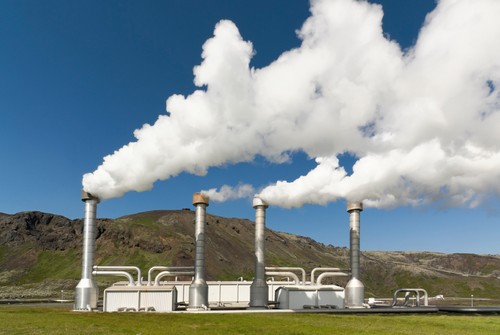Types of Power Plants.
Depending on the source of energy, the following types of power plants are distinguished: Thermal power plants, hydroelectric power plants, nuclear power plants, unconventional power plants.
An electric power station is a complex of installations, equipment, and apparatus used directly for the production of electrical energy, as well as the necessary structures and buildings located within a certain area.
Thermal Power Plants (TPP)
Thermal power plants (TPP) use natural fuel;

The most powerful power plants are located in fuel extraction areas. TPPs that use calorific, transportable fuel, such as coal, fuel oil, peat, and others. TPPs generate electric energy through the conversion of thermal energy released during the combustion of organic fuel. Most TPPs use steam turbine units, in which thermal energy is used in a steam generator to produce high-pressure steam, the rotor of a steam turbine, which rotates, is connected to the rotor of an electric generator (usually a synchronous generator).
Hydroelectric Power Plants (HPP)
Hydroelectric power plants (HPP) use the energy of falling water;

They use renewable resources – the mechanical energy of falling water. The necessary water pressure is created by dams built on rivers and canals. To create pressure across the riverbed, a dam is constructed to accumulate water in a reservoir and concentrate the water level drop over a relatively small section (width of the dam). As a rule, the HPP building is directly adjacent to the dam, where the main equipment is located – hydro units and automatic control and management devices for HPP operation. Water is directed to hydraulic turbines through pressure pipelines. The rotation of the hydro turbine’s impeller under the pressure of falling water is transmitted to the shaft of a hydro generator, which produces electric current.
Nuclear Power Plants (NPP)
Nuclear power plants (NPP) use nuclear energy;

A nuclear power plant (NPP) is a power plant where nuclear energy is converted into electricity. The generator of NPP energy is a nuclear reactor. The heat released in the reactor as a result of the chain fission reaction of certain heavy elements is then, like in conventional thermal power plants (TPPs), converted into electric energy. NPP operates on nuclear fuel (usually 233U, 235U, 239Pu). During the fission of 1 gram of uranium or plutonium isotopes, 22,500 kWh is released, which is equivalent to the energy contained in the combustion of 2800 kg of conventional fuel.
Unconventional Power Plants
Unconventional power plants use wind, solar, geothermal, and other types of energy.
Solar power plant (SES) is an engineering structure that converts solar radiation energy into electrical energy.

Wind power plant (WPP) is a power plant that converts wind’s mechanical energy into electricity using a wind turbine. In the vast majority of cases, blade machines with a horizontal axis, installed in the direction of the wind, are used.

Geothermal power plant (geothermal power plant, gePP) is a power plant where geothermal energy (the energy of the Earth’s deep heat) is converted into electrical energy.
